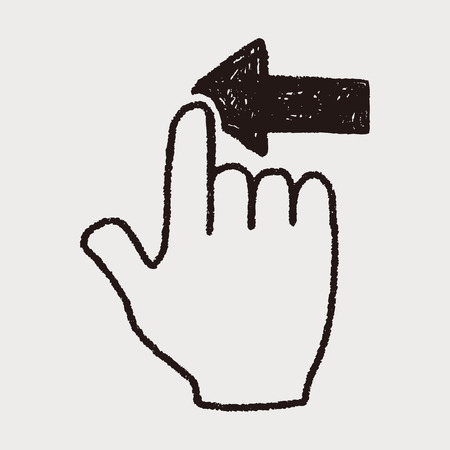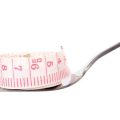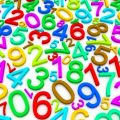1. The Origins and Evolution of Palmistry in Pop Culture
When you think about palmistry, maybe you picture a mysterious fortune-teller at a carnival or a scene from an old Hollywood movie. But have you ever wondered how reading palms became such a big deal in American pop culture? Let’s take a look at how palmistry made its way from ancient traditions to the heart of Western entertainment.
The Journey from Ancient Roots to American Carnivals
Palmistry, also known as chiromancy, has roots that go back thousands of years to India, China, and Egypt. However, it found new life in the West during the 19th and early 20th centuries. As immigrants brought their beliefs to America, palm reading slowly entered mainstream culture. By the late 1800s and early 1900s, it had become a staple at traveling carnivals and fairs across the United States.
Palmistry in American Entertainment: A Timeline
| Era | How Palmistry Appeared | Impact on Pop Culture |
|---|---|---|
| Late 1800s – Early 1900s | Carnival booths and sideshows | Brought palm reading to everyday Americans, often as light-hearted fun or curiosity |
| 1920s – 1950s | Vaudeville acts and radio shows | Palmists became minor celebrities; helped popularize “fortune telling” as entertainment |
| 1960s – 1980s | Hollywood movies and TV shows (e.g., “The Addams Family,” “Big”) | Palmistry shown as both mysterious and humorous; used to move plots or add intrigue |
| 1990s – Present | Reality TV, pop songs, online quizzes | Palmistry adapted for digital age; now seen more as a quirky hobby than mystical truth |
Hollywood’s Love Affair with Palm Reading
From classic films like “Rebecca” to modern-day sitcoms, palm reading has been used as a plot device or comic relief. These portrayals usually play up the drama—think crystal balls, velvet curtains, and suspenseful music. Hollywood loves making palmists seem magical or all-knowing, which adds to their mystique but also fuels myths about what palmistry can really do.
Palmistry’s Changing Role in American Culture
In the early days, getting your palm read was a rare treat at a fair or circus. Now, it’s something you might try at a party for laughs or see referenced in memes and social media trends. In America today, most people see palmistry less as fortune-telling and more as quirky entertainment—something fun but not taken too seriously.
2. Common Myths and Misconceptions
When it comes to palmistry, pop culture in America is full of wild stories and dramatic claims. From movies to late-night TV, people often believe that the lines on your hand can predict everything from your soulmate to your lottery winnings. But how much of this is actually true? Let’s take a closer look at some of the most common myths and clear up what palm reading can—and cant—really tell you.
Persistent Palmistry Myths
| Myth | What People Believe | The Reality |
|---|---|---|
| Your fate is etched in your palm | Every major event in your life is predetermined by the lines on your hand | No scientific evidence supports that your entire future is mapped out by palm lines; hands change with time and experience |
| Certain lines guarantee success, love, or wealth | A deep “money line” means youll be rich, or a long “heart line” means you’ll have perfect love | No single line can promise specific outcomes; these interpretations are more symbolic than literal |
| People with “bad” palms are doomed | If you have broken lines or certain patterns, youre destined for bad luck or hardship | There are no universally “bad” hands; palm reading is not a curse or a guarantee of misfortune |
| Palmistry is 100% accurate science | Palm readings can predict your future as precisely as a doctor’s diagnosis or a scientific test | Palmistry is an art, not a science; it’s about interpretation, not proven facts |
Why These Myths Stick Around
Many Americans are exposed to palmistry through Hollywood films or pop-up booths at street fairs, where fortunes are told in dramatic fashion. This makes it easy to believe in quick fixes or guaranteed outcomes. The truth is, palmistry should be seen more like storytelling or self-reflection rather than hard-and-fast predictions.
Busting the “Fate Is Sealed” Idea
One of the most popular beliefs is that everything about your life—love, career, money—is already written on your palm from birth. In reality, our hands (and the lines on them) can change over time. Stress, lifestyle changes, and even injuries can affect the way your palm looks. That means nothing is set in stone!
The Takeaway: Palmistry as Guidance, Not Guarantee
If you ever get a palm reading at a county fair or see it on TV, remember: those lines might spark interesting conversations or help you think about your choices, but they dont lock in your destiny. Use palmistry as a tool for personal insight—not as a crystal ball.
![]()
3. Hollywood’s Take: Fact vs. Fiction
How Movies and TV Shape Our Views on Palmistry
When most Americans think about palm reading, they often picture mysterious scenes from movies or quirky TV characters gazing at hands under dim lighting. Hollywood loves using palmistry to add drama, suspense, or a touch of magic. But how close are these portrayals to the real thing?
Iconic Examples from U.S. Film and TV
| Title | Palmistry Scene | Hollywood Portrayal | Reality Check |
|---|---|---|---|
| Carnivàle | Sophie reads palms in a traveling circus. | Mystical predictions with dramatic outcomes. | Real palmists focus on guidance, not fortune-telling. |
| Harry Potter and the Prisoner of Azkaban | Professor Trelawney examines Harrys hand in Divination class. | Instant, ominous predictions (like “the Grim”). | Palmistry doesn’t predict specific events—its more about personality traits. |
| The Simpsons | Ladies at carnivals read palms for laughs or warnings. | Stereotyped as scammy or spooky entertainment. | Authentic palmistry is more nuanced and non-dramatic. |
Common Myths from Pop Culture vs. Reality
Myth 1: Palm Readers Predict Your Fate Instantly
Hollywood: With just a glance, palmists can supposedly tell you your entire future.
Reality: Real palmists analyze patterns in your hand to discuss strengths, challenges, and personality—not precise predictions.
Myth 2: The “Life Line” Means Life Span
Hollywood: If your life line is short, something bad will happen soon!
Reality: The life line actually reflects vitality and lifestyle changes, not how long you’ll live.
Myth 3: Only Mystics Can Read Palms
Hollywood: All palmists are mysterious fortune-tellers with supernatural powers.
Reality: Palmistry is a learned skill based on observation and interpretation—it’s not magic.
A Quick Look: Hollywood Drama vs. Everyday Practice
| Hollywood Version | The Real Thing | |
|---|---|---|
| Palm Reader Persona | Mysterious, mystical figure | Person trained in hand analysis |
| Main Purpose | Dramatic predictions about fate | Insights into character and tendencies |
| User Experience | Sensational, often scary or funny | Candid conversation and self-reflection |
| Setting | Candle-lit tents or carnival booths | Diverse—offices, online, holistic fairs, even coffee shops! |
So next time you see a palm reading scene on screen, remember: it may be entertaining, but it’s not exactly how real-life palmistry works!
4. Scientific Perspectives and Skepticism
When it comes to palmistry, or the reading of palms to predict personality traits and future events, the scientific community remains highly skeptical. Decades of research have found no reliable evidence that the lines on our hands are connected to our fate, intelligence, or emotional well-being. Instead, scientists often classify palmistry as a pseudoscience—something that appears scientific but lacks empirical support.
Why Do People Believe in Palmistry?
Despite the lack of scientific backing, millions of people still find palmistry fascinating and even convincing. Psychologists have explored several reasons why people believe in practices like palm reading:
| Reason | Description |
|---|---|
| The Barnum Effect | This is when people accept vague or general statements as personally meaningful. For example, “You sometimes doubt your decisions” can apply to almost anyone, making palm readings feel accurate. |
| Cultural Tradition | Palmistry has deep roots in many cultures. People often trust traditions passed down through generations, giving palmistry an air of credibility. |
| Desire for Insight | Humans naturally seek patterns and meaning, especially during uncertain times. Palmistry offers comfort and answers when life feels unpredictable. |
| Social Influence | If friends or family believe in palmistry, people are more likely to give it a try themselves due to peer influence. |
What Do Studies Say?
Psychological studies have shown that personal readings—like those given by palmists—work mostly because readers use subtle cues from the person they’re reading (a technique called “cold reading”). There’s also little consistency between different palmists’ interpretations of the same hand, which further challenges the idea that there’s a scientific basis for these readings.
Key Takeaways from Research
- Palm lines do not predict personality or destiny.
- Belief in palmistry is driven more by psychology and culture than by evidence.
- The feeling of accuracy usually comes from general statements that could apply to anyone.
While palmistry may be fun and intriguing, it’s important to understand what science says about its claims—and why so many people still find it compelling despite the evidence.
5. Palmistry in Modern American Culture
Palmistry, or palm reading, has taken on a unique role in today’s American culture. While some people still see it as an old-fashioned or mystical art, for many others it’s become a lighthearted activity at parties, fairs, and even corporate events. Let’s take a closer look at how palmistry fits into modern life in the U.S.
From Party Trick to Personal Insight
In the United States, palmistry is often viewed as a fun “icebreaker” at social gatherings. It’s common to find palm readers at birthday parties, bachelorette celebrations, and local festivals. For most people, getting their palm read is less about believing in destiny and more about having an entertaining experience with friends.
Palmistry’s Modern Uses
| Setting | How Palmistry is Used |
|---|---|
| Parties & Events | Entertainment, conversation starter, fun group activity |
| Wellness & Self-Care | Tool for self-reflection, mindfulness exercises |
| Pop Culture Media | TV shows, movies, social media trends |
| Personal Curiosity | Exploring personality traits or making sense of life choices |
The Wellness Trend Connection
Recently, palmistry has found a new place in the wellness and self-care scene. With Americans showing greater interest in mindfulness and personal growth, some have started looking at palm reading as a tool for self-reflection—similar to journaling or meditation. Instead of predicting the future, modern palmists might talk about what certain lines could say about stress levels or personality traits. This approach focuses on helping people think about their strengths and challenges rather than making bold predictions.
Palmistry in Today’s American Culture: Fact vs. Fiction
| Popular Belief (Fiction) | Modern Reality (Fact) |
|---|---|
| Palm readers can predict your exact future. | Palmistry is more about insight and entertainment than fortune-telling. |
| Palm reading is only for the superstitious. | Palmistry appeals to curious people from all walks of life. |
| Palmistry is outdated or irrelevant today. | Palm reading has evolved as part of wellness and self-discovery trends. |
Overall, whether you see it as a quirky party trick or a tool for self-exploration, palmistry continues to reinvent itself in America’s ever-changing cultural landscape.


